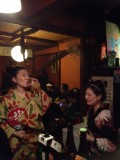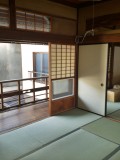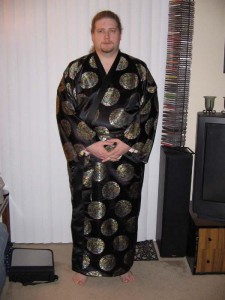- Start your title with a number.
- Include random grandiloquent synonym for “great”.
- Attach irrelevant but eye-catching
stock photoloosely-credited picture nicked from Google Image. - Throw a dice, pick a list item and single it out in your title, to fool people into thinking the list was put together by someone who gave a fuck.
- Include a few useless factoids and thoroughly obvious common-sense observations as filler.
- Sunny weather often follows bouts of rain. Except when it doesn’t.
- The Jews control the media and are conspiring with the reptilian political elites to enslave the human race.
- Include at least one moronic / blatantly false / controversial item, to goad naive people into engaging with your list on social media, thus giving it more exposure.
- Stop and contemplate the vacuousness of your existence.
- Come to the frightening realisation that you are an insignificant leech on the backside of Humanity, whose contribution to the Joy, Happiness or Anything Good to the world is a net negative.
- Jump off a bridge.
Category: Blogging for Google
What NOT to do in Tokyo…
A perk of being a long-term resident in a country that is currently sitting atop most lists for “cool vacay destinations in the world”, is being asked on a weekly daily basis:
“So… What are your Tokyo/Kyoto/Japan tips and recommendations?”
To which I politely smile and internally try to decide whether the person asking is mentally diminished or just hailing from an Internet-free country. Because all I hear is “Could you google Lonely Planet’s Top 10 List of Things to Do in Tokyo for me?”…
Since there is clearly no useful or interesting answer to that question, and since it is a lot easier to be negative than positive1Exhibit A: over ten years of writing on this very blog., I instead decided to compile a near-exhaustive list of places and things that you should stay away from, when you visit Tokyo.
You will notice an important overlap with aforementioned “Top 10 Tokyo whatever” lists commonly found elsewhere, and there’s a good reason for that: these are mostly places that were interesting/special at some point long ago or fit well-enough in the trite “Japan-be-crazy-yo” narrative, to make them ideal candidates for lazy tourist guides and other lists catering to the lowest-common denominator.
Rule of thumb: if you are the sort of tourist who loved their visit to London’s Piccadilly Circus, Paris’ Champs Élysées, NYC’s Times Square or SF’s Fisherman’s Wharf, this list of don’ts is emphatically not for you. In fact, you can even use it as a blueprint for your dream Tokyo visit. For everyone else, here you go:
Maid Cafés
aka Maido Cafés
Last cool/interesting: Never
Who goes there: 20% Japanese (otaku on the spectrum and/or sex-offence-on-minors-under-the-age-of-consent waiting to happen), 80% tourists that heard these things were super popular and cool in Japan.
Selling points: Bland overpriced biscuits served by pimply high-school students to awkward shut-ins and clueless tourists in a hastily-refurbished Akihabara apartment. Basically like Applebees, with more pedophilia and shittier food.
Harajuku’s Takeshita Dori
Last cool/interesting: 2004? 2001?… Whenever the dozen Japanese girls who used to buy their cosplay outfit there graduated from high-school.
Who goes there: 99% foreign tourists (about half Western tourists, convinced that the other Chinese/East-Asian half are authentic locals). 1% Nigerian guys pretending to be from Chicago to sell you authentic American hip-hop streetwear.
Selling points: Foreign otaku cosplay-freaks. Foreign tourists busy photographing authentic Tokyo cosplay-freaks who were seated a row behind them on the flight in. Souvenir shops for tourists. McDonald’s. Starbuck’s. Shops that sell wacky t-shirts that read “Stupid gaijin” or “Looking for Japanese girlfriend” in Japanese. Zero actual Japanese people cosplaying.
Rant: United Airlines, or the Art of Losing Customers
 Airlines tend to be like banks: name any one of them in large-enough company and there is bound to be at least a few people with personal horror stories and imprecations never to use their service. Hard to tell apart the inevitable statistical occurence from true patterns of bad customer service.
Airlines tend to be like banks: name any one of them in large-enough company and there is bound to be at least a few people with personal horror stories and imprecations never to use their service. Hard to tell apart the inevitable statistical occurence from true patterns of bad customer service.
Last week, however, I finally understood why all my US friends heaped so much scorn on United Airlines. And why I’ll be joining in on the chorus of “never again”, next time their name comes up in discussions:
Getting a Japanese Driver’s Licence, pt. 2
Getting a Japanese Driver’s Licence, pt. 1
Through a combination of lack of time, opportunity, resources and general indifference driven by a complete absence of necessity, I managed to make it to my mid-twenties without having ever held a proper driving licence, or learnt to drive a car for that matter. By then, I was living in Japan, where the prospect of going through the entire process in Japanese made the task even more daunting. A few months ago, I finally went for it. And while I realise it is quite a narrow target demographics, I figured I’d document my experience for the benefit of other foreigners looking to get a driving licence in Japan.
Note: This here is about getting a full-fledged Japanese licence from scratch, not converting an existing foreign licence, which is a considerably shorter and easier process: most European licences only require some certified translation and a bit of paperwork, US (and a few other countries) will require you to take a very basic written and driving test on a course (somewhat similar to the process described below, but much, much, easier). The conversion test from a foreign licence is well-documented elsewhere on the Net, although you might find a few useful applicable tidbits in my recount below.
What you need, in a nutshell
- Time: lotsa. By far the biggest annoyance with the process is having to take the time off for the tests. Lessons (if you need them) can often be conducted outside of office hours, but you will need at the very least 5 work half-days for the tests and CPR practice course (more if you need to retake any).
- Money: lotsa. No surprise there. Depending on all sorts of factors, you could theoretically manage on about ¥30k (if you are already a near-perfect driver who does not need any practice). More realistically, your wallet will be ¥300k lighter by the end (give or take, depending on your skills and success at exams).
- Japanese abilities: surprisingly not so essential. There are English-speaking private instructors (see below) and the written tests can be taken in English. Provided you understand enough Japanese to follow very basic driving instructions during the test (“Turn right at the second light”, “Stop the car on the left” etc.) and do not mind being completely lost during the many pre-test explanation lectures (mostly stuff that could be guessed with enough common sense or the help of a personal instructor), you will manage.
Main steps to obtaining your licence
Buckle up, it’s a bumpy ride:
Continue reading
Going to Graduate School in Japan on a Monbushō Scholarship
A long overdue primer on applying for a Monbusho. Hopefully just in time for this year’s application deadline.
What is a Monbusho scholarship?
Monbushō, short for Monbukagakushō (文部科学省), is the Japanese name of the Ministry of Education, Culture, Sports, Science and Technology. It is also the metonymic name of the grad school scholarship distributed by said ministry to international students. In practice, unspecified mentions of “monbushō” will nearly always refer to the scholarship1“MEXT” is the favoured English abbreviation when talking about the ministry.
In a nutshell, the main qualities of Monbushō scholarships are:
- You get to study and live in Japan for up to 3-4 years (5-6, if you apply for a Master).
- You have a free-meal ticket to practically any faculty in any university in Japan: both prestigious national ones (Todai, Kyodai…) or expensive private ones (Keio, Waseda…).
- In addition to your (potentially costly) tuition fees, the grant includes a stipend for living expenses2constantly decreasing over the years, but still pretty decent for a scholarship.
- Beside a few conditions (being a foreigner and having a bachelor degree, mostly) and a lengthy application process, these scholarship come with very few strings attached: you are free to study anything you’d like, wherever you’d like (and can leave a lot of the decisions to after the application gets approved).
For more technical details, Google, Wikipedia and your nearest Japanese embassy are your friends.
What do you know about Monbushō scholarships?
My Favourite Kyoto Bars, Cafés and Clubs
 During all my years in Kyoto, I carefully avoided writing about my usual haunts for very selfish reasons1There is very little information on Kyoto bars and clubs available on the English web (all your google searches and guidebook reading will yield the same tired 2-3 touristy bars). In this situation, even the most mediocre write-up of a bar on English blogs or media immediately brings a large contingent of out-of-town punters looking for a way to fill their evening after the temples have closed. Nothing personal, but I had rather not seeing my favourite tiny bars suddenly overrun by one-timers at the risk of losing their personality.. I guess now that I no longer have a vested interest in keeping them sparsely attended, I might as well share them with whomever ends up here.
During all my years in Kyoto, I carefully avoided writing about my usual haunts for very selfish reasons1There is very little information on Kyoto bars and clubs available on the English web (all your google searches and guidebook reading will yield the same tired 2-3 touristy bars). In this situation, even the most mediocre write-up of a bar on English blogs or media immediately brings a large contingent of out-of-town punters looking for a way to fill their evening after the temples have closed. Nothing personal, but I had rather not seeing my favourite tiny bars suddenly overrun by one-timers at the risk of losing their personality.. I guess now that I no longer have a vested interest in keeping them sparsely attended, I might as well share them with whomever ends up here.
Note: For each entry, I tried linking to Google Map (when a listing existed) or whatever relevant page I could find with directions. For entries missing an address, try copy-pasting the Japanese name into Google Map and keep your eyes peeled for signs (keep in mind Japanese bars are often in the upper stories of non-descript buildings).
Note 2: Despite its relatively active nightlife for a city its size (thanks to a sizable student population), Kyoto is not a metropolis: do not expect crowds on weekdays. Depending on all sorts of factors, practically any place listed below is liable to be empty on any random day.
Gaea, aka Rei’s bar
By far my favourite place in Kyoto for drinks, food or conversation. Set in a traditional machiya that has been tastefully redecorated along the African sensibilities of the previous owner, the result is a low-key, friendly and warm izakaya-style bar where it is impossible to not feel at home. Rei (Kyoto’s Finnish-Japanese answer to Kurt Kobain) welcomes every new customer like an old friend (and indeed, most are or eventually become so). More than a neighbourhood bar, the place is a social club where a large extended family of friends and strangers-soon-to-be-friends meet up for casual chit-chat and regular food/music events (Facebook’s page of the bar is the best way to know about these). A funky Manson family, with less beards and way less gruesome murders.
Because the place is well hidden (better check the map twice), attendance on nights where no special events are taking place is very erratic: you might walk in the middle of some wild impromptu jam party or find yourself in small committee with Rei and the odd regular having a nightcap on their way home. If you do catch Rei on such an off-night, don’t miss the occasion to pick his brain on any item of local interest: the man is a living-yellow-pages of all things bar/music/food/fun-related in Kyoto and surrounding areas (and speaks perfect English).
Beside a few creative cocktails and reasonably-priced beer, the place has a small daily food menu (with more elaborate options available on special events, such as Mami’s infamous afternoon cake café event).
Frontières Sans Nations, aka Philippe’s bar
Another fixture amidst cosmopolitan kyotoites is Philippe’s cozy hole-in-the-wall bar along the canal street of Kiyamachi. With room for a dozen (thin) people at the best of times, it is not unusual to find the place packed on big nights, but generally there is always a spare stool or the edge of a bench for you to squeeze in (not the ideal place for large groups).
On most weeknights however, the atmosphere will tend toward a more intimate mix of Japanese and Foreigners (French/Europeans well represented), both in clientele and style, with a good selection of wines and home-cooked vegetarian dishes available.
Update 2013: Philippe moved to a (slightly) bigger location, still on Kiyamachi, but now south of Shijo.
Kazu bar
Easy to see why the place is so famous among Kyoto semi-underground drinking circles (and the strongly non-overlapping set of people who read the kind of fancy glossy travel magazines that lap up that sort of place): on the 3rd floor of a building tucked in a tiny back alley, no sign (no name), minimally decorated, well-stocked with exotic liquors and only lit with enough candles to ensure you can see as far as your drink on the table…
But despite its typical hipster-traveller appeal, the place is an authentically awesome bar, in no small part thanks to the eponymous Kazu: friendly, outgoing and quite often drunker than everybody else in the bar. Does your local barkeep spontaneously come up carrying enough takoyaki from his favourite nearby store to feed your entire table at 2am? I didn’t think so either.
“How to find it?”, you ask… Err, well, yea… You are probably gonna have to befriend some trendy locals (or ply me with the promise of free Gin&Tonic, on the next occasion I am in town). Failing that, it’s not gonna be an easy search. You can try going toward this place and looking up (good luck, it took me half-a-dozen times learning to get there without getting lost).
Milan’s and ING
When needing a change from intimate moods and underground vibes and looking for a bit more of a shot-bar party atmosphere, Milan’s bar is a pretty reliable choice: comfy middle eastern opium den meets cheesy hip-hop bar… Smoke a shisha, share a few shots with Milan (all drinks ¥500) and who knows where things can go from there.
If no amount of drinking can make you put up with shitty music, ING bar guarantees a much more palatable selection of rock classics (and less classics), with a student crowd and super-friendly staff (owner will gladly take music requests for your favourite bands and might even spontaneously play them again, the next time you show up).
More…
Of course, there are always the classics (those you have already read about a dozen times in every half-assed Kyoto guide): Café Indépendants is a nice place to grab a beer and some tasty food (cheap menu sets available on weekdays), but despite its nifty old-school cantina style, it is more of a place to chill-out on your own or with your own friends, than to meet new people.
A-Bar is the ever-reliable go-to place for travellers looking to socialise… with other travellers mostly (expect to see on average one Lonely Planet guide on each table) or large groups of students that would not fit anywhere else. A little overrated, but the beer is cheap and atmosphere convivial.
Grab a bite…
Too many good food options in Kyoto to even consider listing, but a few places I like in the vicinity of Kiyamachi (where all aforementioned bars are located):
大豊ラーメン [Taihō Ramen]
Hands-down my favourite ramen place in Kansai: cramped, scary-looking and of questionable hygiene standards, as any proper ramen place should be. Serves the fattest, most awesome, black pork-based ramen soup you will ever find (Kyushu style). Stick with the normal version and stay away from the shashū (extra pork) option, unless you fancy eating half a fattened pig with your noodles. Perfect after (or before) a night of clubbing and/or drinking. Located in a tiny alley, off Kiyamachi-dori.
彌光庵 [Mikoan]
The exact opposite of the previous place in every respect: cozy (albeit quite messy in its own way) bar/restaurant that specialises in vegetarian food similar to typical shōjin-ryori, at a fraction of the price (evening menu set for ¥1000). Super-friendly owner and equally friendly in-house cat. Also a good place for an evening tea in a jazzy atmosphere. Place is a bit hard to find (Google map): take a right from the main street and go up to the nondescript door at the end of the (ultra-narrow) alley.
石焼 石庵 [Ishiyaki Ishiori]
More traditional (and pricier) restaurant specialising in meat and fish grilled on a stone (at your table). Cool yet unpretentious setting and good food. Owner lived in San Francisco for many years and speaks fluent English.
Will add a few words about Kyoto’s two surviving nightclubs in a bit. Anyway: due to Kyoto mayor’s successful crackdown on nightlife, there isn’t much to talk about right now.
PS (2014): on my occasional visits back to Kyoto (and while getting a drink at some of the aforementioned locales), I have bumped in quite a few people who ended up there through this post. Which is really awesome. If you end up checking any of the above and like it (or not), do post a comment down here!
A Few Tips on Renting an Apartment in Tokyo
 Earlier this month, after three weeks of exhausting non-stop search (times two people, plus countless awesome friends lending us their help), we finally signed the rental contract for our new Tokyo house.
Earlier this month, after three weeks of exhausting non-stop search (times two people, plus countless awesome friends lending us their help), we finally signed the rental contract for our new Tokyo house.
Although it eventually worked out and we are very happy with the place we found, the process was far from smooth and painless (despite having a fair bit of experience with the whole thing).
Anyway I (/we) did learn a few things in the process, so I figured I’d share with Google.
Behold:
Dave’s 8 Tips on Renting an Apartment in Tokyo (/Japan)
Finding bike parking in Tokyo
Finding a website listing bike parking in Tokyo/Japan turned out not to be as straightforward as I thought (at least, none of my Google queries for the obvious words such as 駐輪場 or 自転車+駐車場 led to anything useful). Local wards (区役所) websites usually have a section for bike parking (bicycle and scooters), but they are not the most user-friendly.
After finally accidentally stumbling on two pretty good sites this morning, I figured I would share my finds with the English-speaking Google world:
Chu-rin.jp has exhaustive listings of bike parking for Tokyo and a few other major cities (Osaka, Kyoto…). Searchable by map or by station.
Cariru-cycle.com (apparently a bike rental website) also has listings of bicycle parking around Tokyo. Not clear if their data is any better/different from chu-rin.jp.
Of course, both of these websites are entirely in Japanese, but not that difficult to navigate even for a beginner.
Doing your PhD in Japan – Addenda
This post originated as a comment to this entry on the eminently readable blog of a scientist living in Osaka. Midway through writing it, I remembered I had my own soapbox for that sort of drivel: better than crowding some innocent bystander’s comment section.
Usual limited-interest-topic disclaimer applies: unless you are have a vested interest in getting your PhD (in Japan), you are better off skipping this entry and waiting for more pictures of awesome Shanghainese moped-riding cats.
By and large, I agree with everything Jan wrote. The operative quote, I think, is that it depends more on university/faculty [and advisor] than anything else.
As a freshly-graduated PhD student (from a Japanese university), I figured I could offer some extra pointers, gleaned from personal experience and that of close friends in similar situations at a couple “major” Japanese universities:

